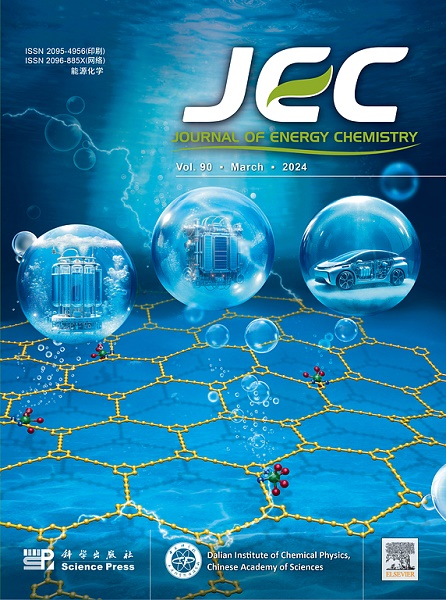Dynamics of metal anode morphology: insights into aqueous Zn and Sn metal batteries at different current densities
IF 13.1
1区 化学
Q1 Energy
引用次数: 0
Abstract
Aqueous batteries, renowned for their cost-effectiveness and non-flammability, have attracted considerable attention in the realm of batteries featuring Zn-based and Sn-based configurations. These configurations employ Zn and Sn metal anodes, respectively. While the growth patterns of Zn under various current densities have been extensively studied, there has been a scarcity of research on Sn dendrite growth. Our operando imaging analysis reveals that, unlike Zn, Sn forms sharp dendrites at high current density emphasizing the crucial necessity for implementing strategies to suppress the dendrites formation. To address this issue, we introduced a carbon nanotube (CNT) layer on copper foil, effectively preventing the formation of Sn dendrites under high current density, thus enabling the high-current operation of Sn metal batteries. We believe that our work highlights the importance of suppressing dendrite formation in aqueous Sn metal batteries operating at high current density and introduces a fresh perspective on mitigating Sn dendrite formation.

金属阳极形态动力学:不同电流密度下锌和锡金属水电池的观察
水溶液电池以其成本效益和不可燃性而闻名,在锌基和锡基电池领域引起了相当大的关注。这些结构分别采用Zn和Sn金属阳极。虽然锌在不同电流密度下的生长模式已经被广泛研究,但对锡枝晶生长的研究却很少。我们的operando成像分析显示,与Zn不同,Sn在高电流密度下形成尖锐的枝晶,这强调了实施抑制枝晶形成策略的关键必要性。为了解决这一问题,我们在铜箔上引入了碳纳米管(CNT)层,有效地防止了高电流密度下锡枝晶的形成,从而实现了锡金属电池的大电流工作。我们认为,我们的工作强调了在高电流密度下抑制水相锡金属电池枝晶形成的重要性,并为减轻锡枝晶形成提供了新的视角。
本文章由计算机程序翻译,如有差异,请以英文原文为准。
求助全文
约1分钟内获得全文
求助全文
来源期刊

Journal of Energy Chemistry
CHEMISTRY, APPLIED-CHEMISTRY, PHYSICAL
CiteScore
19.10
自引率
8.40%
发文量
3631
审稿时长
15 days
期刊介绍:
The Journal of Energy Chemistry, the official publication of Science Press and the Dalian Institute of Chemical Physics, Chinese Academy of Sciences, serves as a platform for reporting creative research and innovative applications in energy chemistry. It mainly reports on creative researches and innovative applications of chemical conversions of fossil energy, carbon dioxide, electrochemical energy and hydrogen energy, as well as the conversions of biomass and solar energy related with chemical issues to promote academic exchanges in the field of energy chemistry and to accelerate the exploration, research and development of energy science and technologies.
This journal focuses on original research papers covering various topics within energy chemistry worldwide, including:
Optimized utilization of fossil energy
Hydrogen energy
Conversion and storage of electrochemical energy
Capture, storage, and chemical conversion of carbon dioxide
Materials and nanotechnologies for energy conversion and storage
Chemistry in biomass conversion
Chemistry in the utilization of solar energy
 求助内容:
求助内容: 应助结果提醒方式:
应助结果提醒方式:


